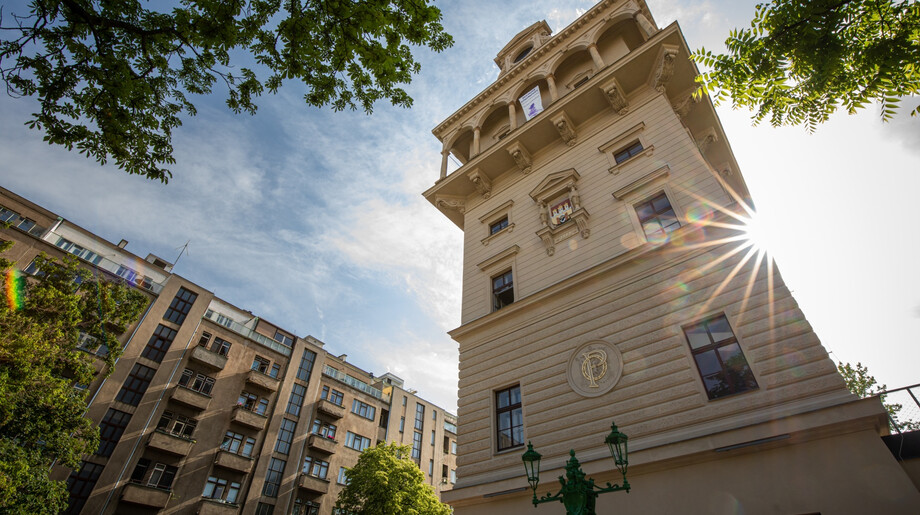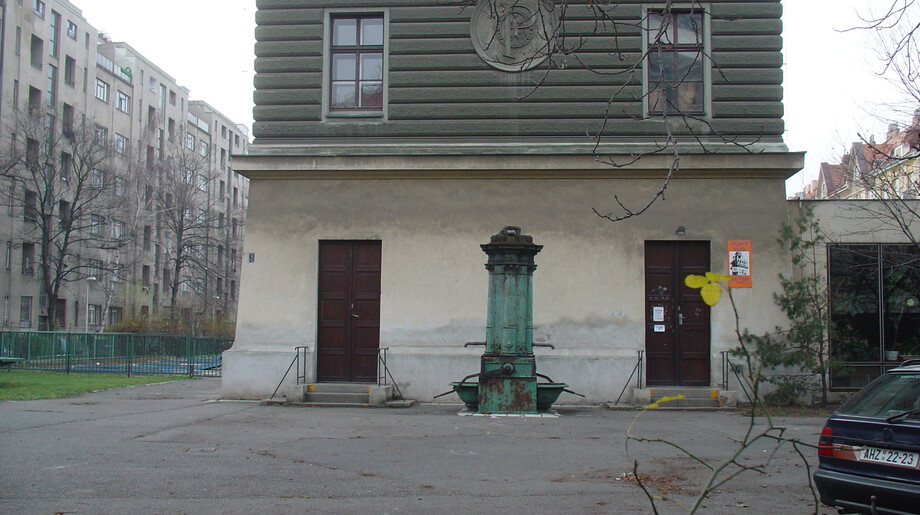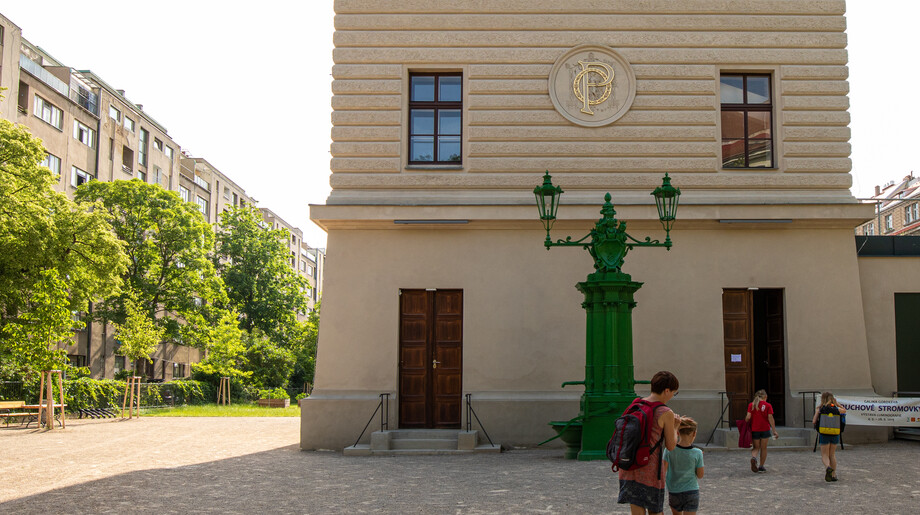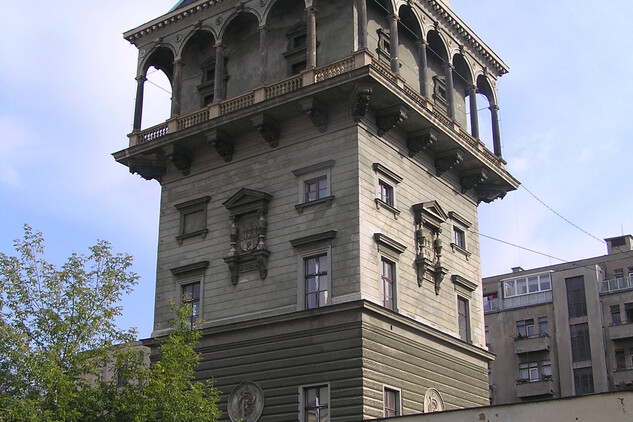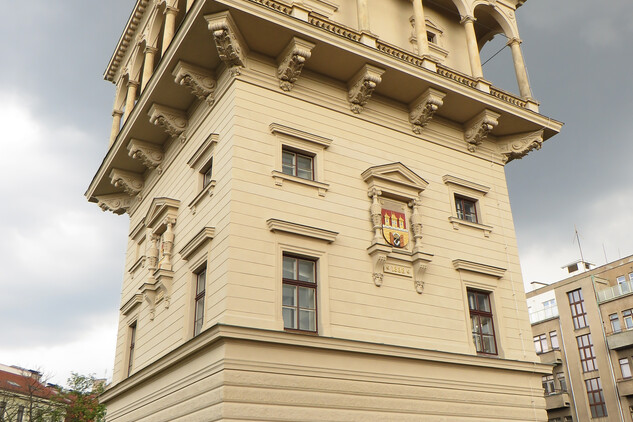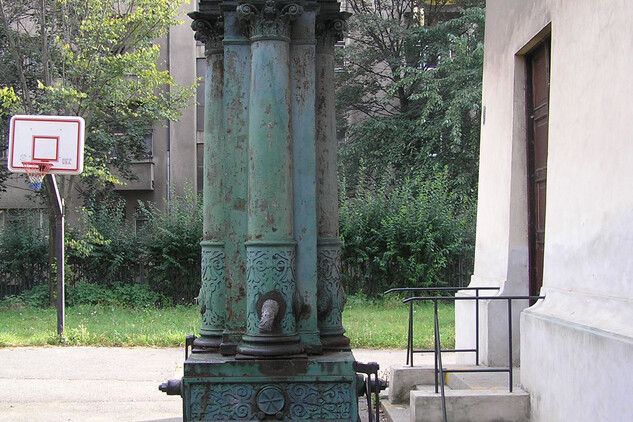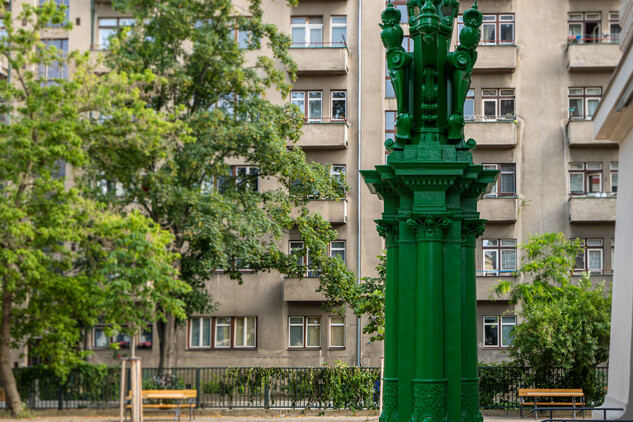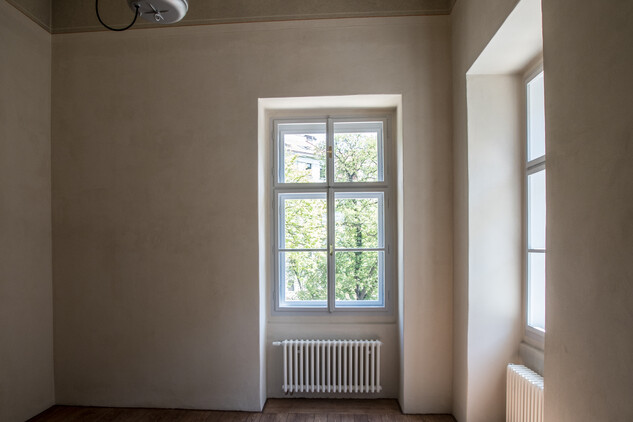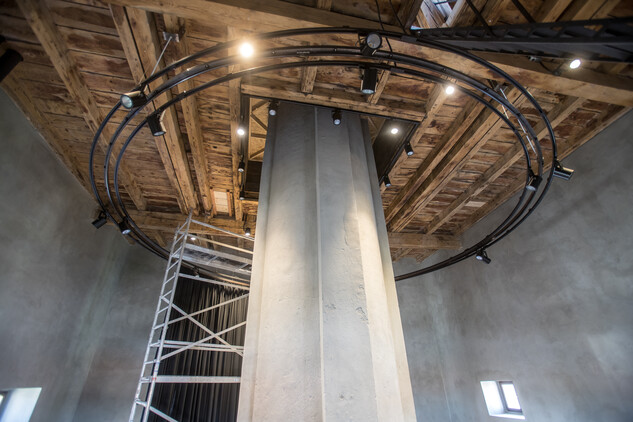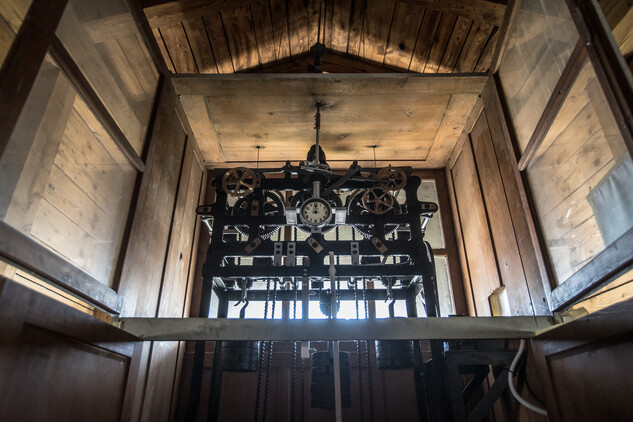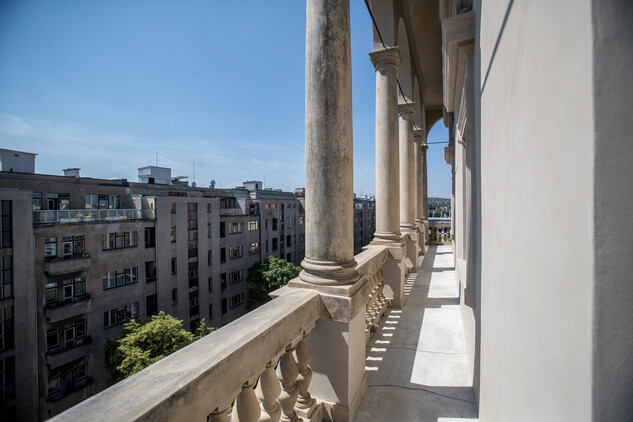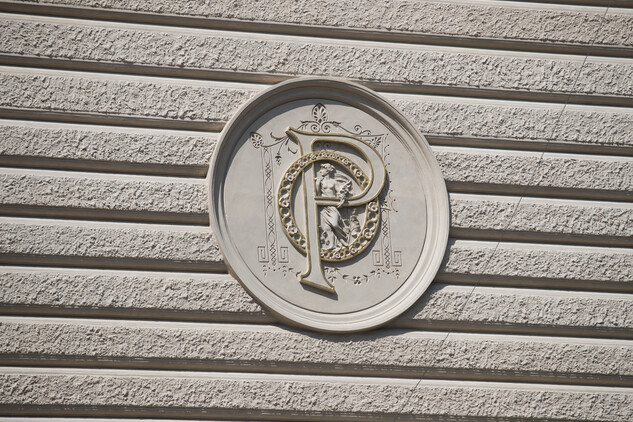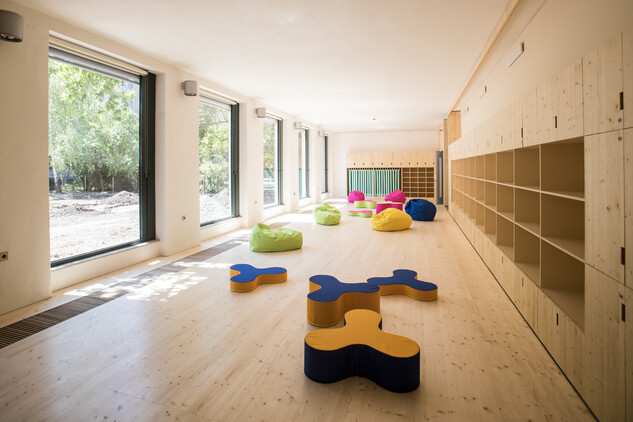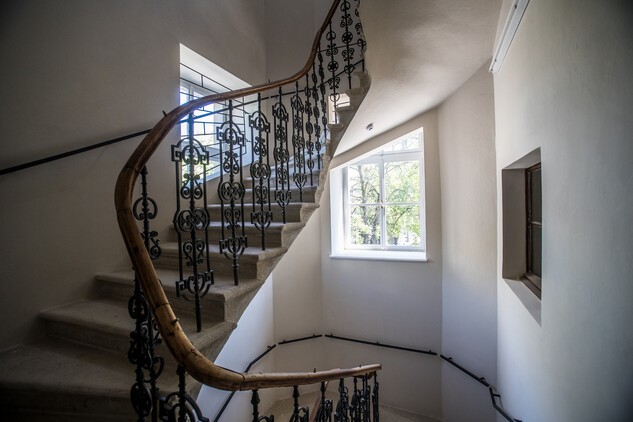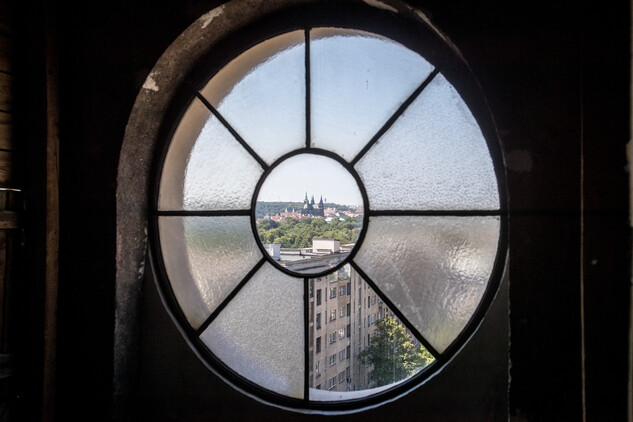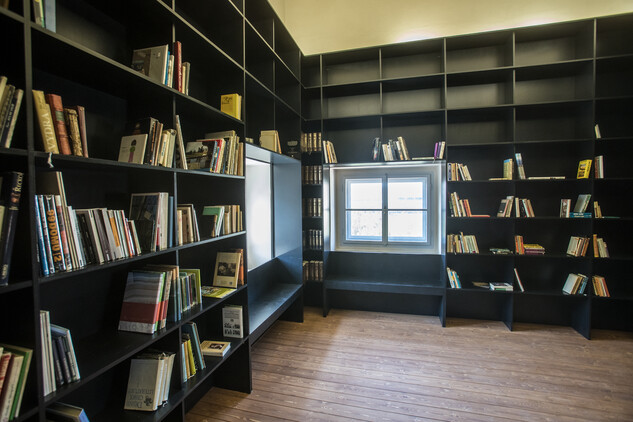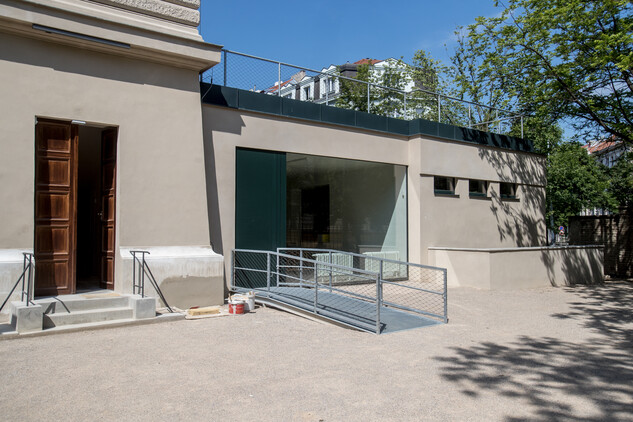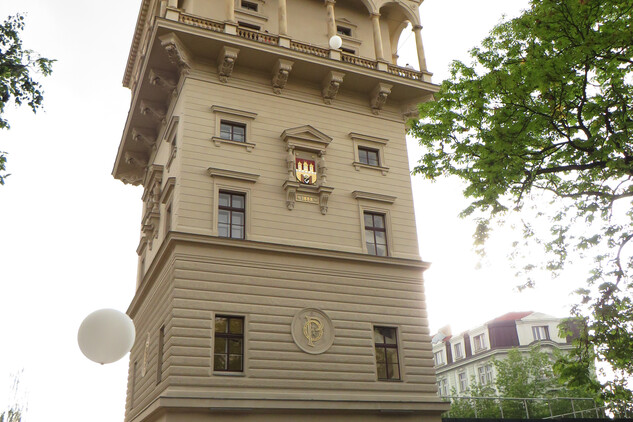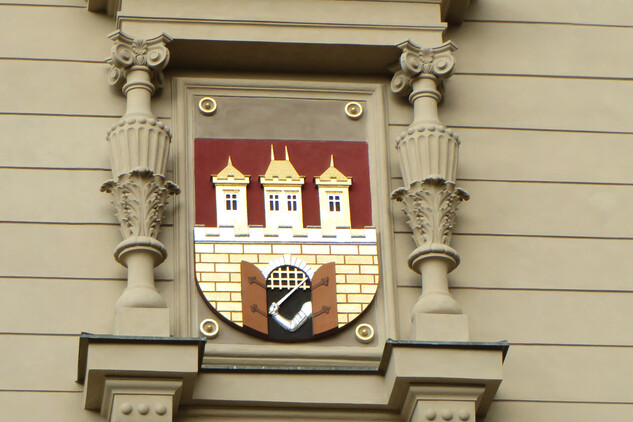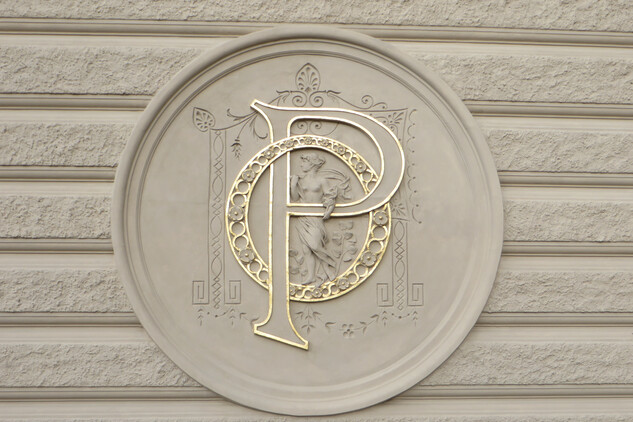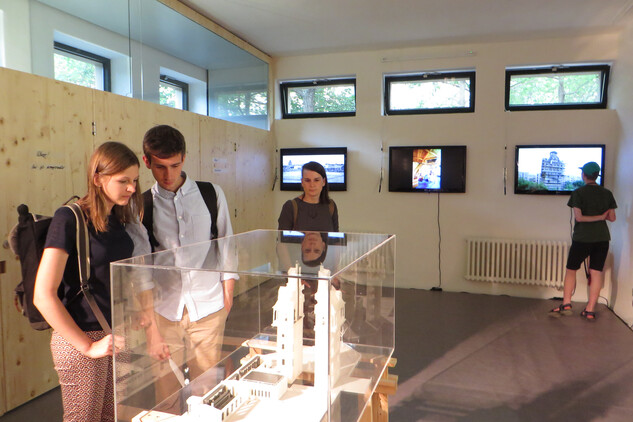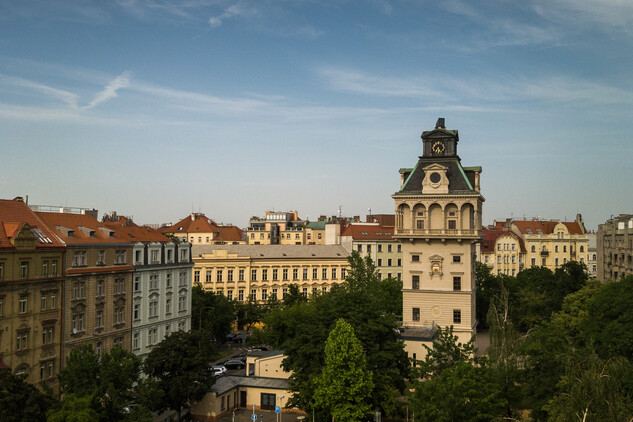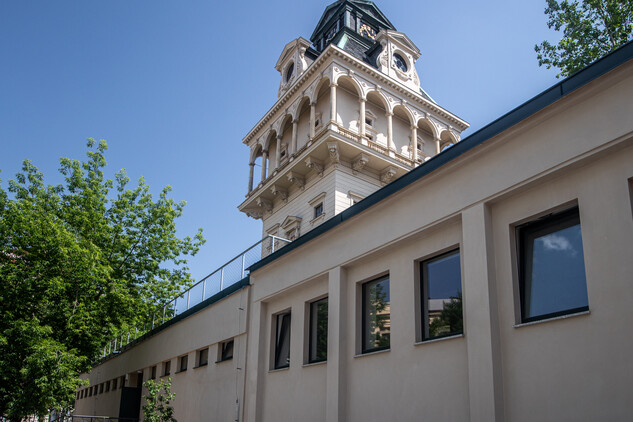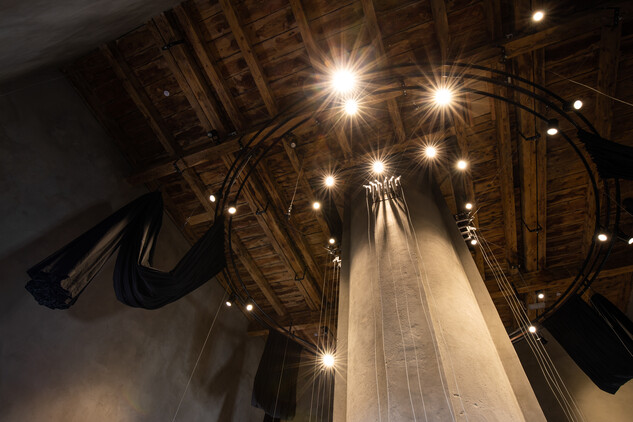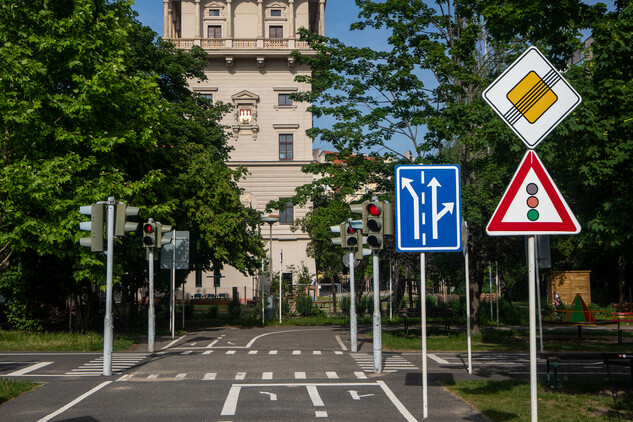The Waterworks Tower at Letná supplied drinking water to the left bank part of Prague between 1888 and 1913. It features unique neo-renaissance architecture rich in artistic elements, with cast-iron fences and drain stand, originally placed in the street Na Slupi in the New Town neighborhood. After 1913, the building was used as a residential facility for waterworks employees, and since 1976, as the youth center.
The former ways of use and building adjustments damaged the building, removing many artistic details. However, the tower was never substantially rebuilt, and so its historic value has been preserved. Of the original technological solution, the vertical pipeline remained; a chimney running through the center of the whole building is visible on the 4th floor, together with the imprint of the ring-type tank surrounding the chimney. Chutes were revealed in the foundations of the building, and then preserved under the new terrazzo floor. The main benefit of the reconstruction was the renovation of façades damaged by the lack of maintenance as well as previous unsuitable coatings. Based on the thorough survey, the reconstruction of façades was carried out, including the restoration of the embossed decorations and color schemes. Unsuitable elements, such as the dispersive coating of the façade or concrete cones from the barrister that were replaced by sandstone replicas. Also a part of original internal fittings was reconstructed, such as steel industrial windows on the ground floor or the main entrance door; the rest was, again, replaced by replicas. Due to the amount of modern elements, the changes of the interior allowed for more creativity, yet all the original parts (staircases, barristers, fragments of colorful concrete floors, or the interior decorative paintings, unexpectedly found) were reconstructed or restored as true to the original as possible. Also functional and non-distracting modern elements were preserved, to bear witness of the historical development of the building; alternatively, contemporary details were installed deliberately as part of the current architectural plan. Based on the historic photos, complete renovation of the drain stand was carried out.
By the restoration of authentic materials and colors, the exterior once more became convincing and representative dominant feature of the neighborhood. The specific spatial arrangement of the interior is rather difficult for everyday use, yet a number of leisure-time activities started here after the reconstruction: children clubs organized by the Youth Center of Prague 7, Readers’ Community Center, galleries, conference hall, etc. There are also regular guided tours through the whole tower; on the 4th floor, a periscope is installed in the chimney that enables visitors to take a look at the surroundings.
Nominated for the City of Prague by the regional center of the National Heritage Institute in Prague.
The City District Prague 7, represented by Mayor Jan Čižinský, was nominated for the National Heritage Institute Prize, category: Renovation of the heritage site, restoration.
